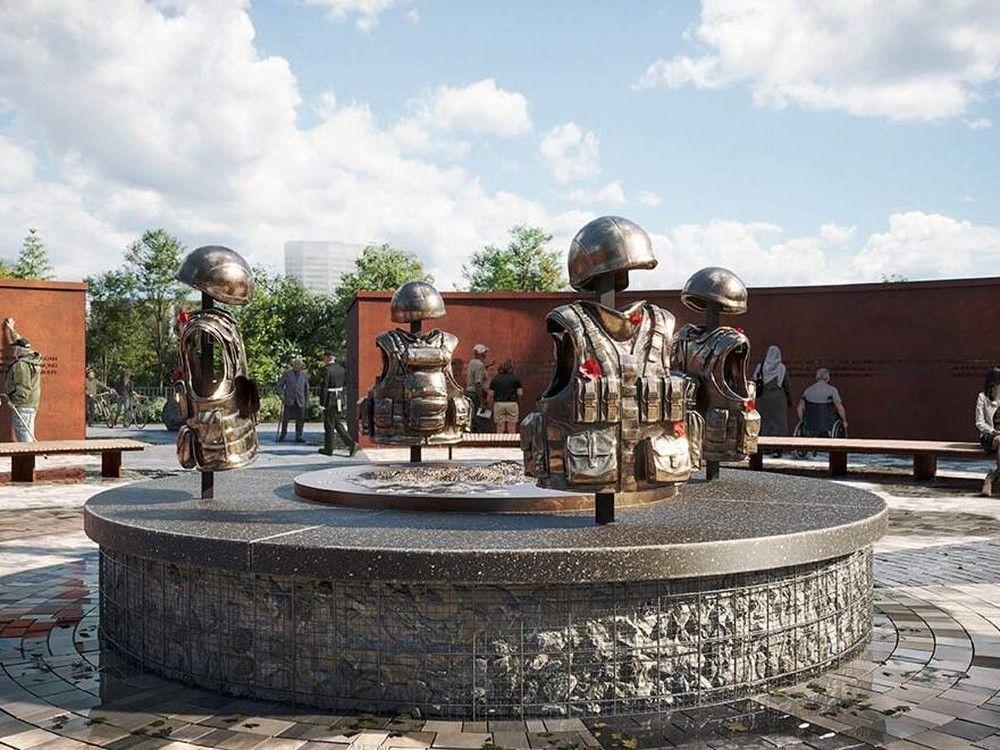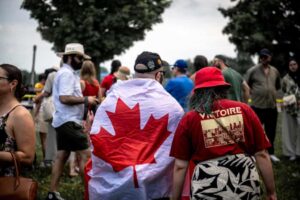
On the cusp of Remembrance Day, an ugly battle over the long-awaited National Monument to Canada’s Mission in Afghanistan is set to take place Tuesday on Parliament Hill.
Two members of the Montreal-based design team that won the juried competition to create the monument — but lost the commission when the federal government overruled the jury in June — are set to appear at the House Committee on Veterans Affairs and demand a reversal of the decision amid accusations that the process was “unfair” and “undemocratic.”
Former Supreme Court justice Louise Arbour, an advisor to the design team that won—then lost—the chance to deliver the $3-million project, told this newspaper on Monday that federal officials chose to “cheat” the winning Team Daoust submission by ignoring their own rules in awarding the design contract to a Team Stimson submission from Alberta.
“I think there should be a lot of concern about the integrity of procurement processes by the federal government,” said Arbour.
The memorial is earmarked for a high-profile site directly across Booth Street from the Canadian War Museum and near the National Holocaust Monument. Its unveiling is now delayed until 2027, officials revealed at a Veterans Affairs committee meeting last week.
But the design chosen to commemorate Canada’s mission in Afghanistan, jointly announced in June by the federal ministers of Veterans Affairs and Canadian Heritage, touched off a war of words over the selection process, the role of expert juries in awarding public commissions, and the nature of commemorative art itself.
Veterans Affairs Minister Ginette Petitpas Taylor came under fire from Bloc Québécois and Conservative members of the Veterans Affairs committee last week for the way the commission was awarded and the additional years of delay now expected before the memorial is built.
Although the appointed jury decided two years ago that the Team Daoust concept for the monument was the best of five finalists, Veterans Affairs went on to conduct a survey of veterans and the general public that department officials say showed the Team Stimson concept was solidly preferred.
The jury received those survey results but decided that the Team Daoust submission was still the superior design.
Petitpas Taylor stated at last week’s committee hearing that the survey responses from Canadian veterans — especially those who served in Afghanistan — were the most important factor in awarding the commission to Team Stimson.
The Team Stimson design, led by Siksika (Blackfoot) Nation artist Adrian Stimson from southern Alberta, draws on “elements of healing from the concept of the Medicine Wheel,” including walls inscribed with the names of Canadian military personnel who died in Afghanistan and a “circular, sacred space of safety, a ‘home base’ of reflection, memory and contemplation.” The central feature is a stone circle with four bronze flak jackets and helmets draped on crosses, “utilitarian yet poignant reminders of protection.”
The Team Daoust design; led by Montreal architecture and urban design firm Daoust Lestage, Quebec City artist Luca Fortin and their strategic advisor Arbour; featured a contemplative space around two large walls erected at angles to create framed views of the Peace Tower to the east and Canadian War Museum to the west.
It was Arbour, according to team leader Renée Daoust, who helped inspire the design by referencing the famous line from Canadian poet-musician Leonard Cohen’s song Anthem: “There is a crack, a crack in everything; that’s how the light gets in.”
Daoust said that she and Fortin will appear before the committee on Tuesday and insist that the government revisit the decision. “We want to get our project back, because we did win.
“My wish would be to find an elegant solution without resorting to the courts.”
Daoust indicated that Team Daoust remained open to certain changes to its design, including the addition of engraved names of Canada’s fallen soldiers on the monument, a feature included in the Team Stimson design.
Arbour said the controversy has created an uproar among artists and urban design specialists over the trumping of a jury’s decision by government officials. “It’s more than disagreement with the design team.”
Between 2001 and 2014, more than 40,000 members of the Canadian Armed Forces served and 158 Canadian soldiers died in Afghanistan.
“Thousands of other veterans of the war were wounded physically and psychologically, leading to additional deaths by suicide,” states the Canadian War Museum.







